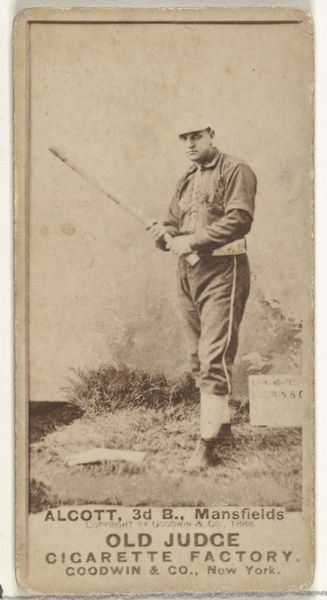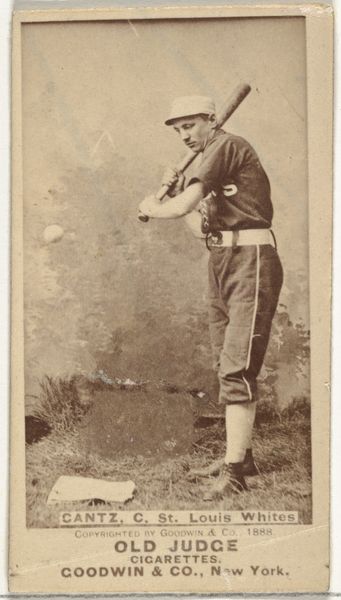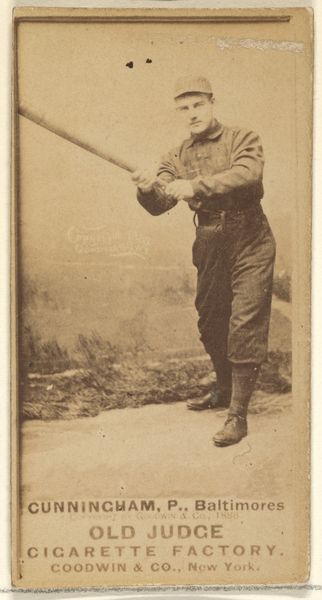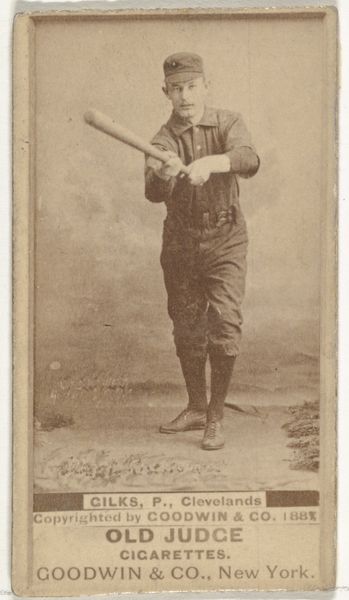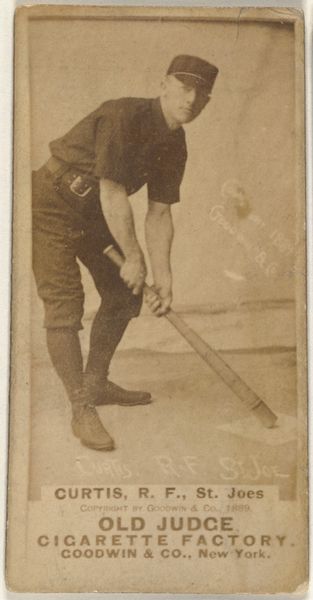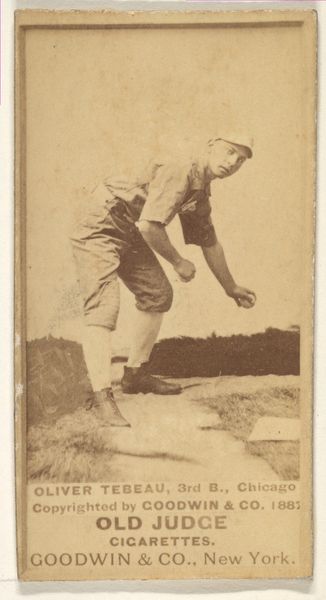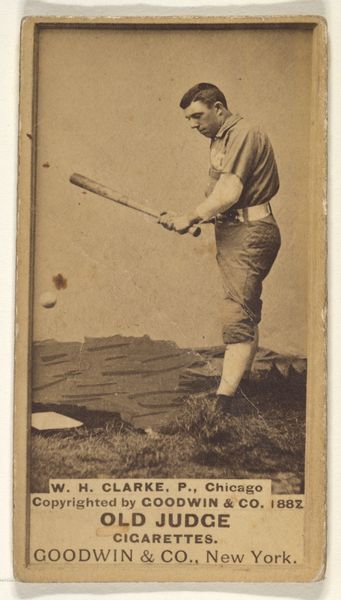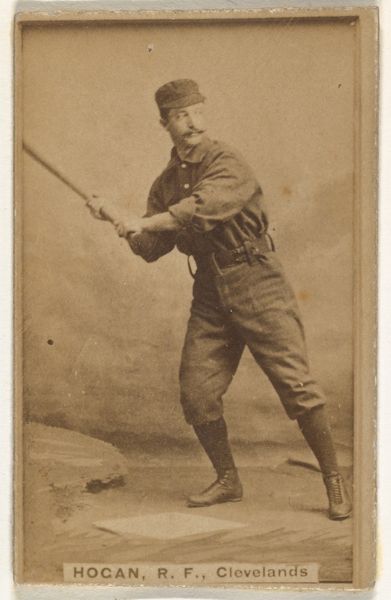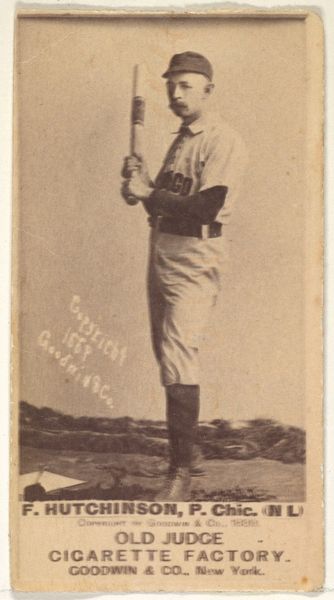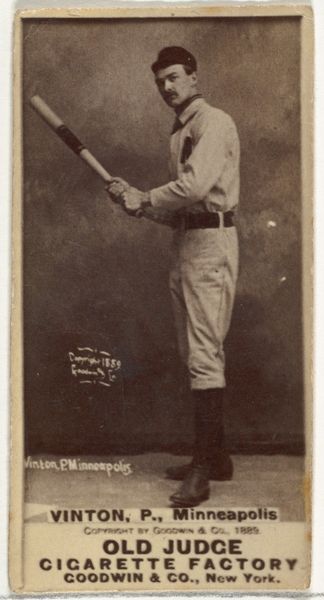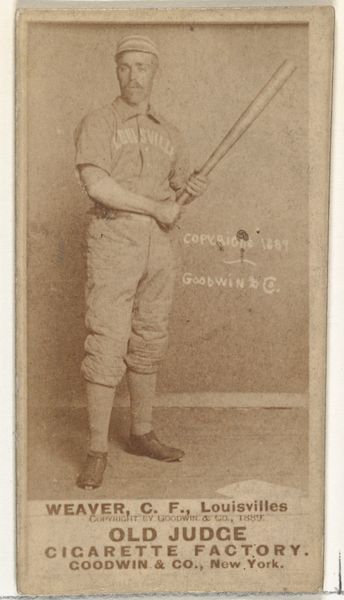
Duke of Beaufort, from the Racing Colors of the World series (N22b) for Allen & Ginter Cigarettes 1888
0:00
0:00
drawing, coloured-pencil, print
#
portrait
#
drawing
#
coloured-pencil
# print
#
caricature
#
coloured pencil
#
academic-art
#
portrait art
Dimensions: Sheet: 2 3/4 x 1 1/2 in. (7 x 3.8 cm)
Copyright: Public Domain
Curator: The figure in this card from Allen & Ginter's "Racing Colors of the World" series, printed around 1888, is strikingly direct. I’m immediately drawn to the colour scheme; that sharp red cap against the almost washy blue backdrop... very striking. Editor: It’s curious how this simple chromolithograph, intended as a commercial collectible with cigarettes, uses the conventions of portraiture to assert social status through colour and, frankly, conspicuous consumption. The flattening effect feels almost caricatured, which detracts from a serious engagement. Curator: Indeed, the flattening emphasizes its industrial, mass-produced nature; we should remember this wasn’t crafted as high art but as a disposable token associated with a consumer product, tobacco. It points to the commodification of leisure and the elite during that period. Think about who was consuming this! Editor: Though, the chromatic choices have a certain boldness. The blue and white bands on his shirt and the warm treatment of his complexion create a pleasing rhythm that complements his serious mien, lending it an immediate legibility and undeniable compositional charm despite being a print. Curator: Well, if we think about Allen & Ginter, it becomes clear that these cigarette cards reflect social values but also manufactured desire. It is the convergence of industrial printing technology with social signaling via commodities that elevates this little picture. It's all about distribution and the cultural reach of these tiny portraits. Editor: Even on close looking, the hatching employed in the colour blocks is readily appreciable despite its size, indicating the craftsman had a clear sense of value and hue that translated well into popular print for wide distribution. Curator: So, here we have it; a mass-produced print associated with cigarettes acting as a looking glass reflecting Victorian consumer culture and social ambition. A material artifact pregnant with meaning. Editor: I’ve observed how its very limitations—its print origin and commodified existence—nonetheless contain some intrinsic artistic flair within its presentation. It’s simple; it catches your eye and does its job, however humble that job may be.
Comments
No comments
Be the first to comment and join the conversation on the ultimate creative platform.

